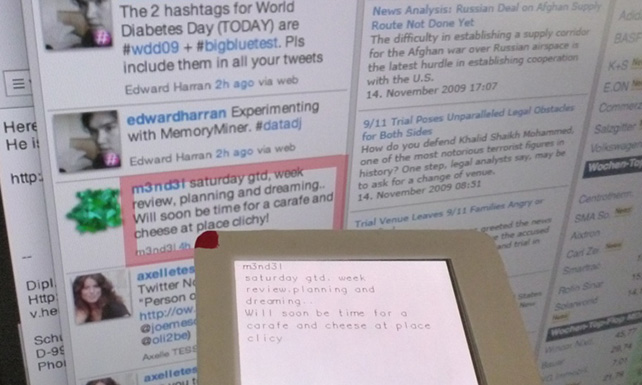Presently the way we interact with all computers and mobile phones is through a 2-dimensional hierarchical system. This necessitates numerous steps in order to “take” information from a device and “give” this information to another person, either on their device or in the real world.
„Take“ and „Give“ are the first gestures humans learn. Why must technology complicate this intuitive action? DADA aims to translate these simple acts of „taking“ and „giving“ to computer interfacing. In so doing, DADA will simplify unnecessary steps in data transfer to only one step, making it more efficient and human-friendly. DADA will break the mindset that computer interaction is only eyes, ears, and fingertips.
1. DADA makes it possible to interact with data tangible, as with paper, cardboard or Post It notes. DADA is based on e-paper. The user touches one edge of the e-paper card to the screen and information from that location on the screen is automatically copied onto the e-paper.
2. DADA uses wireless data transfer and location technology based on a patent for graphic tablets created by Wacom more than 26 years ago. The e-paper is powered through inductive, wireless energy, so it does not need batteries, which affords a design that does not feel electronic.
The first DADA implementation is tested in work environments that require rapid and frequent information transfer between online and offline. Because DADA offers a physicaly safe and highly intuitive method for information transfer, we envision future implementations of DADA in mobile phones, tablets and credit cards. For instance, a user might use DADA technology to take information from his computer or tablet by touching the screen with the edge of his mobile phone or from one phone to another. During purchase transactions, the user could pay or authorise by holding his credit card or mobile phone onto a specified spot on a webpage.




Comments are closed.